Twirlbound's first game was Pine, which was released in 2019. The game had an interesting premise, where humans were not at the top of the food chain and survival meant competing with other species that would actively gather the same resources. The game did fine enough; players took to the premise better than most critics, but even some fans would agree that the game was sometimes overly ambitious. The Knightling is the studio's second game, and while it is also an open-world title, the experience is both lighter in tone and mechanically different from the previous work, making for a more accessible title that mostly works as intended.
In the land of Clesseia, Sir Lionstone is considered to be the greatest knight in the land thanks to his various heroic deeds, like saving villagers from giant monsters. As a knightling, you've been lucky enough to be assigned to train with Sir Lionstone, and you hope to one day be a fraction of the hero that he is. On a routine patrol at the borders of the kingdom, Sir Lionstone and his knightling find an ancient vault full of powerful minerals and ancient monsters that are not only guarding the vault but also building up in numbers. After saving his knightling from danger, Sir Lionstone sends away the knightling to protect him from harm while he stays to fight the ancient beasts. The knightling has safely returned to the heart of the kingdom, but Sir Lionstone has not. You play the role of the knightling, who's determined to find Sir Lionstone while also helping everyone along the journey. Lionstone's legendary shield, Magnustego, is the knightling's only available tool.
Compared to the developer's previous work on Pine, what you have in The Knightling is more lighthearted fare. Part of that comes through from the characters and their dialogue. There's a bit of silliness instilled in every character, major or minor, but all of the humor plays out like subtle attempts at comedy within an adventure game rather than transforming the title into pure comedy. The adventure is still treated seriously, but the situation never feels too dire. It's the kind of game story that's meant for all ages and works fine for all audiences.
The best way to describe the core gameplay is that it aims to emulate what you'd see in a modern open-world adventure: a good mix of open lands, a few towns filled with people, hidden areas with chests littering the world, and monster encampments. Each place has areas and dungeons that can only be accessed once you have the right ability, giving the game a bit of a Metroidvania influence. While the game gives you a chance to go straight down the main storyline path, you're free to wander and do whatever you want before getting back on track.
One interesting gameplay mechanic comes through when you're opening a chest or activating a switch. Once you hit the button to perform the action, you'll be prompted to hit a series of buttons to successfully pull the switch or open a chest. From a narrative perspective, it shows off the knightling's ingenuity versus just using brute strength, but your mileage will vary on whether you'll actually like the gameplay mechanic.
The game's hook lies in the shield Magnustego and the various ways it can be used by your knightling. From a combat perspective, the most obvious thing you'd do with a shield is play defensively. Blocking is obvious, and you can block most attacks, but you won't get tells, like a flash or other indicator, when a blockable attack is coming. There are indicators for unblockable attacks, so you can at least dodge out of the way. If you are daring and can master the timing, you can parry regular and unblockable attacks in addition to projectiles, so this is one move you'll want to master early on. Not only will you be able to get an opening for your own attacks from a good parry, but you'll also be able to stun opponents. This becomes tremendously helpful when dealing with large groups of enemies at a time; it can help you thin out the group faster or give you some breathing room, since you can stun one foe and then concentrate on another without worrying about being attacked for a short while.
When going on the offense, your shield becomes a weapon because you'll be bludgeoning enemies with it. You only have one attack button, so don't expect to employ hits of varying strengths, but you can execute a number of combos with that one button. You can do shield bashes and a ground pound, and you can even use the shield as a projectile that will return after being thrown. If you're familiar with the video game Captain America: Super Soldier,the combat will feel similar — minus the use of punches and kicks, since you'll never fight without holding Magnustego.
The shield also plays a big part in traversal. Initially, you can use the shield as a sled, and while it works best on sloped surfaces, you can slide just about anywhere if you have the running momentum to do so. Sliding up a slope isn't logical, but the physics won't stop you from getting a little bit of distance from it. Later on, you'll gain the ability to use the shield like a glider, which lets you gain more distance from a jump and lets you ride wind currents to gain more altitude and distance. Both slopes and wind gusts are abundant in the game's world, so you can easily use both moves to move around.
Both combat and traversal become more abundant once you perform the required upgrades, and while you'll get some upgrade materials by stumbling onto hidden treasure chests or random skirmishes, a number of materials will come from quests. The mainline quests are pretty straightforward, but the side-quests are where the game cuts loose a bit with humor and variety. One quest has you trying to find some flowers in a sewer to woo a maiden for another knight. Another quest sees you get an ingredient to make the worst-smelling cheese for a local baron. Several quests have you racing down a path to solve a land dispute or entertain a kid whose parents have gone away. Combined with some other lesser side-quests, such as unlocking cartographer towers, and there's plenty to keep you busy.
Overall, the gameplay in The Knightling is quite nice. Traversal feels right, especially since you have a good amount of mobility. The puzzles benefit from the solid platforming, but they're also good on their own. The puzzle elements cause you to think for a little, but they aren't so difficult that you'll be stumped for hours on end. The combat may feel a tad slower than expected, but the hits feel powerful, especially when you can pull off a good parry that results in everyone in the area being stunned. The game has a tendency to overwhelm with big crowds, but it never feels too punishing, especially since the game has the option to toggle invincibility on and off, thus lowering the chances of a player not being able to finish the game.
While most of the game is well done, there are a few gameplay annoyances. The game doesn't have a lock-on system because it favors a more free-flowing combat style, you should expect to get hit by off-screen enemies and enemies with no indication that they're attacking — all while you're busy dealing with another opponent. Unless you go into the options and increase the font size, opening chests or dismantling enemy armor can be bothersome because the button prompts are rather small. You'll also grow to dislike the dismantling and opening mechanic, since you can still be interrupted while performing the button sequence. This likely causes you to forgo using the dismantling armor tactic in favor of button-mashing enemies until they expire.
The biggest issue plaguing the game is a lack of polish in a number of areas. Detail pop-up is a thing, but it's only bothersome when something stark appears, such as a bright light for a dungeon exit suddenly appearing in an area that was previously dark. There are a few elements that fail to animate, such as villagers gliding along before remembering how to walk. The most egregious issue happens when you enter or leave a dungeon. Do this, and the game stops at the loading screen. The loading bar is full, and the panning animation for the portrait still works, but you can't progress. The only way to fix it is to exit the game, restart it, and load the save file. The problem is that the game auto-saves right before you need to do a dungeon unlock sequence or right before a boss fight, so there's a good chance that you'll need to redo those tasks unless you manually save before leaving a dungeon or overworld. This can be fixed with patches, but it is a shame to see these kinds of issues appear at launch.
On the audio side, the game is mostly good. The music fits with the story's lighthearted yet epic theme. It isn't pretentious, but it sets the mood nicely. The sound effects are fine, and the voices do a good job of making this feel like an all-ages appropriate adventure. All of the voices are actually mumbling, and while each character distinctly mumbles, the lack of enunciated voices is reminiscent of games like Banjo-Kazooie, further solidifying the feeling of a fun romp versus a serious adventure.
Where the game falters on this front is the inclusion of Magnustego's voice. Unlike everyone else in the game, Magnustego is fully voiced with understandable English rather than incoherent mumbling. From a storytelling standpoint, this works fine when you learn that the knightling is the only one who can hear the shield speak. However, the idea falls flat when you hear Magnustego repeat lines often or chastise you for not being aggressive. Hearing him repeat the same lines can be annoying, and hearing how dodging an attack isn't as good in his eyes as using your shield is also off-putting, since dodging is a completely viable strategy, especially early on when you haven't mastered the timing for a parry. In this regard, having a chatty weapon was a bad idea.
Visually, The Knightling looks quite nice. The characters animate well, and their slightly exaggerated proportions and the fact that everyone is helmeted makes the game look endearing. The environments also look nice, and the use of color makes the game look like a classic platformer, even if the colors look a touch flat instead of vibrant. The game also runs at a high frame rate, making the title look good even if you take into account some of the graphical issues that I've mentioned earlier.
There is no badge on the Steam store page at the time of this writing, but The Knightling does work on the Steam Deck. The game runs at the device's native 1280x800 resolution, and cloud saves are present, so playing on the go is more attractive. With a default Medium preset, the game hits around the mid-30s fps range. Things drop slightly to around 28fps if the action becomes frantic with effects like heavy smoke clouds. However, the game proves to be quite taxing on the battery life; a full charge on the LCD version of the Deck only gives you around two hours of game time.
As a whole, The Knightling is an enjoyable romp. The lighthearted storyline and tone complement an adventure that feels open and engaging at almost every opportunity. The use of a shield as your only weapon and pseudo multitool is novel but very enjoyable, and the presentation is good overall. It needs a little more polish and bug fixing for the game to be considered solid. For adventure fans who are looking for something that doesn't follow the Souls-like trend, The Knightling is worth checking out.
Score: 7.5/10
More articles about The Knightling


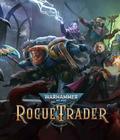
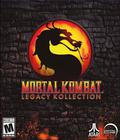
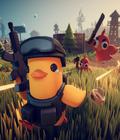


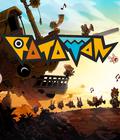
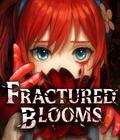

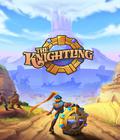 The Knightling is a fantasy action/adventure where you step into the shoes of a brave knight-in-training for a mix of exploration, questing, combat and platforming in a semi-open fantasy world.
The Knightling is a fantasy action/adventure where you step into the shoes of a brave knight-in-training for a mix of exploration, questing, combat and platforming in a semi-open fantasy world.



















